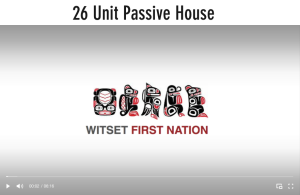Foundations for Indigenizing the Carpentry Trades Instruction
This page is awaiting peer review. As a team, we understand the importance of incorporating Indigenous Knowledges in meaningful ways. If any section of this resource seems superficial or has represented Indigenous Knowledges in harmful ways, please let us know. We strive to continue weaving in Indigenous Knowledges, voice and stories in throughout the resource in a meaningful way.
As you move through this resource you will be asked to reflect on knowledge from the introductory modules for Indigenization and Greening. We remind you that you are not meant to be experts in either of these topics but instead are invited to reflect on your current pedagogy and find spaces where you can start to weave in Indigenous content, ways of knowing and practices of reconciliation as well as the practice of Greening.As incorporating Indigenous ways of knowing requires us to reflect and shift our own pedagogies you will notice the components that focus on Indigenization focus on pedagogy over content. We have weaved in stories and resources that draw from the 4 R’s of respect, reciprocity, relevance, and responsibility (Archibald, 2008) and we hope that these stories will help you reflect on ways you can create tangible changes in your current pedagogy. We recognize the process of Indigenization takes time and that it will create spaces of discomfort. So, we offer this guiding question:
“What can you do to get to know your discomfort”.
In other words, how can this guide help you navigate through your discomfort and offer tools to support your journey. This guide is meant to be a living document which can be adapted to meet you where you are at in your journey and be returned to multiple times.
Other guiding questions you may ask yourself as you get started are:
- Why is Indigenization important to me as an instructor?
Bringing Indigenous knowledges and ways of knowing into your carpentry teaching and practice can create multiple benefits. Indigenous ways of knowing emphasize the importance of place and interconnectedness. When applied to the work of a carpenter, this makes us think differently about a building’s role in the surrounding environment. A building affects, and is affected by, the ecosystems and human communities in which it exists, and taking steps to ensure this relationship is respectful will improve the sustainability of our built environment. For example, many places across Canada are blessed with abundant forests which, when logged responsibly, can provide sustainable timber for building. Wood buildings embody their local environment and can also result in reduced emissions as compared to alternative products (we will explore this more in future chapters). Lower-emissions building materials are core to the process of ‘greening’, but, viewed through a slightly different lens, they are also an example of Indigenization.
Indigenous communities across Canada are demonstrating how ‘greening’ and Indigenous ways of knowing can be compatible. Watch the video at the link below to learn about one such project in British Columbia. This shows how a building project can incorporate greening principles while also being relevant to place and culture, and making opportunities for Indigenous youth to develop valuable skills in the trades.
ACTIVITY
Click on the image below to watch a short video on “Passive Houses” from the Witset First Nation.

